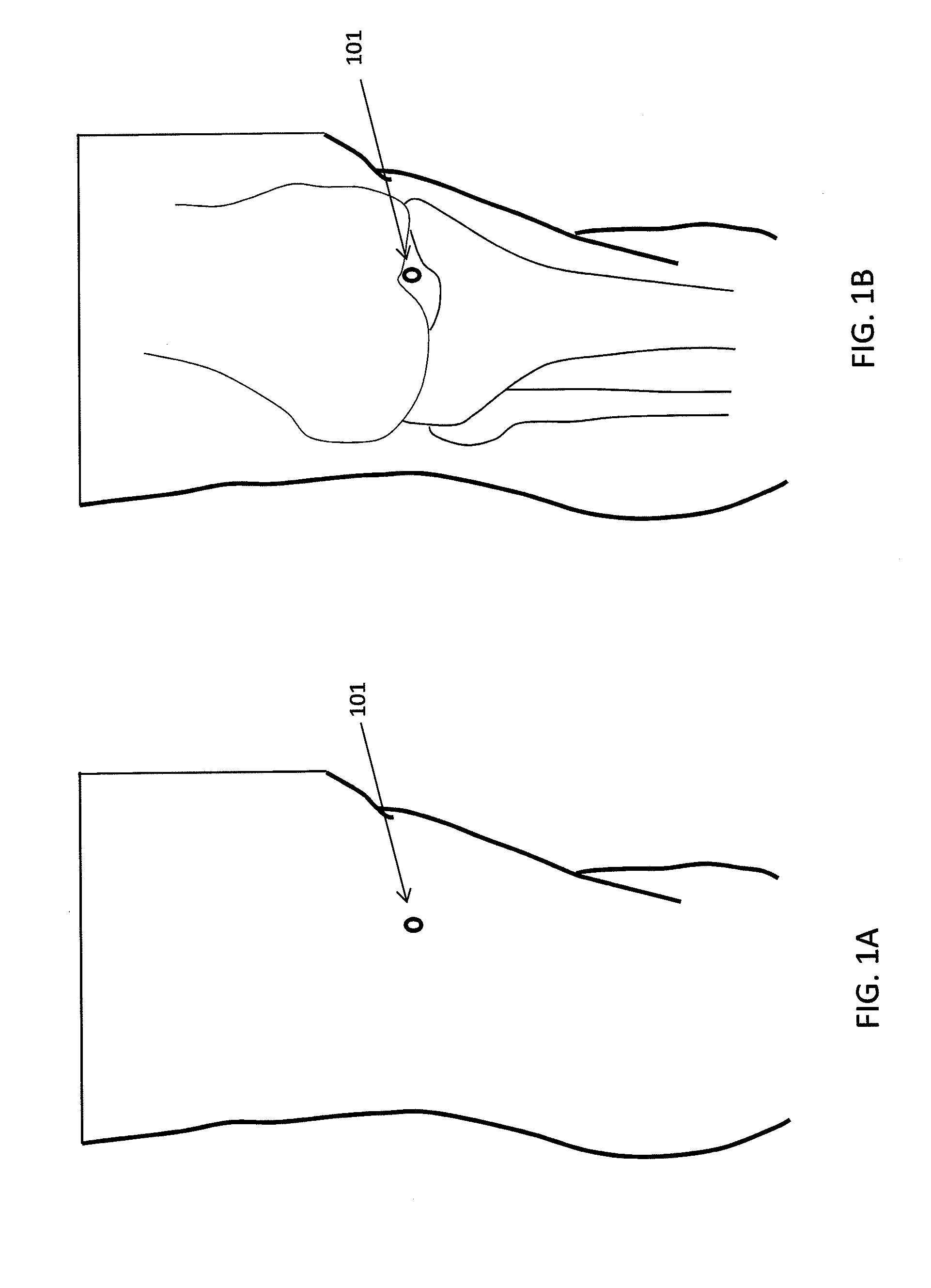Methods and devices for preventing tissue bridging while suturing
a technology of tissue bridging and suturing, applied in the field of suture passers, can solve problems such as compromising the repair, and achieve the effects of enhancing sliding over the first length of suture, facilitating the loading of the first length, and facilitating sliding over
- Summary
- Abstract
- Description
- Claims
- Application Information
AI Technical Summary
Benefits of technology
Problems solved by technology
Method used
Image
Examples
Embodiment Construction
[0039]Described herein are devices and methods for preventing entrapment of non-target tissue (e.g., tissue bridging) when using a suture passer to form a loop (or loops) of suture through and / or around a target tissue. In particular, described herein are devices and systems for passing a loop of suture through and / or around a torn meniscus of the knee without forming a tissue bridge.
[0040]As used herein in the specification and claims, including as used in the examples and unless otherwise expressly specified, all numbers may be read as if prefaced by the word “about” or “approximately,” even if the term does not expressly appear. The phrase “about” or “approximately” may be used when describing magnitude and / or position to indicate that the value and / or position described is within a reasonable expected range of values and / or positions. For example, a numeric value may have a value that is + / −0.1% of the stated value (or range of values), + / −1% of the stated value (or range of val...
PUM
 Login to View More
Login to View More Abstract
Description
Claims
Application Information
 Login to View More
Login to View More - R&D
- Intellectual Property
- Life Sciences
- Materials
- Tech Scout
- Unparalleled Data Quality
- Higher Quality Content
- 60% Fewer Hallucinations
Browse by: Latest US Patents, China's latest patents, Technical Efficacy Thesaurus, Application Domain, Technology Topic, Popular Technical Reports.
© 2025 PatSnap. All rights reserved.Legal|Privacy policy|Modern Slavery Act Transparency Statement|Sitemap|About US| Contact US: help@patsnap.com



